Nestled in the southern Cotswolds, the city of Bath is renowned for its historic architecture and as a UNESCO World Heritage Site due to its well-preserved Georgian and Roman architectural heritage. The Romans built the famous Roman Baths under natural hot springs, creating a centre for bathing when it was known as "Aquae Sulis", the ruins which remain one of the city's most iconic landmarks. In the 18th century, under George III, Bath developed into an elegant town with neoclassical Palladian buildings such as Robert Adam's 18th century elegant Pulteney Bridge inspired by the Rialto Bridge in Venice, and The Royal Crescent, considered to be the most prestigious address in Bath. One of the most significant Norman buildings in Bath is Bath Abbey, which was founded in the 11th century, is England's last great medieval church.
One of the great empires of the western world, the Romans arrived in Britain in AD43 following a successful invasion by Emperor Claudius. The city of Bath, or Aquae Sulis, quickly emerged. It was a strategically important site for the Romans and the presence of a burbling hot spring was revered as curing physical or spiritual suffering and illness. Constructed around 70AD as a grand bathing and socializing complex, the Roman Baths are one of the best-preserved Roman remains in the world, where steaming spring water still fills the bathing site every day. The Sacred Spring lies at the very heart of the ancient monument. Set alongside a temple dedicated to the healing goddess Sulis-Minerva, the baths form one of the world's best-preserved ancient spas. The heart of the complex is The Great Bath, a lead-lined pool filled with steaming geothermally heated water from the 'Sacred Spring'. Although now open-air, it would originally have been covered by a barrel-vaulted roof, and included the caldarium (hot bath), tepidarium (lukewarm bath), and frigidarium (cold bath). The Kings Bath was added in the 12th century, The Queens Bath in the 16th century and the upper terrace promenades in the 18th and 19th centuries.
These days, the museum houses artefacts from the Roman period, including objects that were thrown into the Sacred Spring, presumably as offerings to the goddess and include more than 12,000 Denarii coins, which is the largest collective votive deposit known from Britain. A gilt bronze head of the goddess Sulis Minerva, which was discovered nearby in 1727, is also displayed, and is one of the best known objects from Roman Britain. One of the more curious items in the collection are a series of 'Roman Curse Tablets', personal and private prayers of 130 individuals inscribed on small sheets of lead or pewter. Believed to range in date from the 2nd to the late 4th century AD, the tablets were rolled up and thrown into the Spring where the spirit of the goddess Sulis Minerva dwelt. They are mostly from people who had suffered an injustice, asking for wrongs to be put right and for revenge. In 2014, the curse tablets were inscribed on the UNESCO Memory of the World UK register.
Founded in the 11th-century Bath Abbey is one of the most significant Norman buildings in the city
the abbey lay in ruins for more than 70 years
View of the Abbey Nave through a vase of fresh flowers
Abbey Lectern with Bible open for the evening's sermon
Effigy of James Montagu, Bishop of Bath 1608-1616,
who arrived when the Abbey was roofless and personally paid for it be rebuilt
and whose reign was one of peace and prosperity
of calm and stability, something unheard of in medieval kingship
Flaming torches provides a glimpse of how the baths were illuminated in ancient times
The green hue of the pool is due to algae, caused by the water's exposure to the open air, however when the pool was roofed over in Roman times, its waters were crystal clear
the baths, and were carved for the opening of the Roman Baths to the public in 1897
Our tour started on the main level of the Baths
The King’s bath had niches installed into the sides of the pool where bathers
could sit in the curative waters, which is where the sacred spring comes up
The Romans built the baths over the Aquae Sulis, or Sacred Spring, a geothermal spring that can be seen bubbling up, known as the Fons Sulis, and which is believed to have healing powers
Water from the hot springs flows in to the main pool
The Roman Baths lay undiscovered for many years, but in 1727 a life-sized head, the remains of a statue of the goddess Minerva, was uncovered while sewer workers were digging in the area
The Ivy Bath Brasserie & Garden
Bath High Street
The Ivy Bath Brasserie & Garden
Capocollo with celeriac rémoulade and toasts
Salt and Pepper Squid Tempura with Miso, wasabi mayonnaise, Sriracha, coriander and lime
The Ivy Classic Shepherd’s Pie with slow-braised lamb and beef with Cheddar mash,
rosemary and red wine sauce
Wild Mushroom and Truffle Linguine with rocket and parmesan cheese
Espresso Coffee Crème Brûlée with butter shortbread
Sticky Toffee Pudding
Serves 4
Recipe courtesy of The Ivy
For the date base:
200g stone less dried dates
200ml water
For the date base, place both ingredients in a pan and boil and then simmer for 3 minutes until the dates are soft. Remove from the heat, liquidise and cool down.
For the pudding:
45g unsalted butter, room temperature
140g soft dark brown sugar
2 large free range eggs
170g date base (see above)
170g plain flour
1 tsp baking powder
For the fudge sauce:
175g caster sugar
50ml water
50g glucose
10g unsalted butter
340ml double cream
Pre-heat the oven to 350°F.
For the pudding, cream the butter and sugar in a food processor, slowly add the eggs, mixing well. Add the date base. Sieve in the flour and baking powder, and carefully fold by hand into the mix. Pipe or spoon into well-greased ramekins up to 3/4 full, and bake for 17-20 minutes until golden brown. If you stick a knife in, it will come out clean. Allow to cool a little and remove from the ramekins.
The fudge sauce can be made while the sponges are being cooked. Dissolve the sugar into the water in a deep, thick-bottomed saucepan, washing the sides of the pan down with the water so that there are no visible sugar crystals showing. Place on a medium heat until the mixture begins to boil. At this stage, add the glucose and again wash down any visible sugar on the sides of the pan. Increase the heat. Once the sugar is a caramel colour, gently stir in half the cream and butter. Please do this carefully to avoid burning yourself! Remove from the heat and leave to cool for 5 minutes and then add the rest of the double cream. Sieve the fudge and keep to one side.
To assemble, the puddings slice off the tops and discard (or eat!). Cut each one horizontally into 3 discs. Re-heat the sauce. Then, put one disc back into the ramekin. Add sauce and repeat the process until all 3 discs are done – covering the top with a little sauce so that the sponge is doused in the sauce. Press down with the back of a spoon. Cover each with clingfilm and leave in the fridge for at least a couple of hours, or overnight.
Pre-heat the oven to 350°F. Put some water into a deep baking tray, but not so much that it would cover the ramekins, and put the ramekins into the tray. Bake in this bain-marie for 12 minutes. At The Ivy, we serve this with vanilla ice cream. You can use this or crème fraiche.































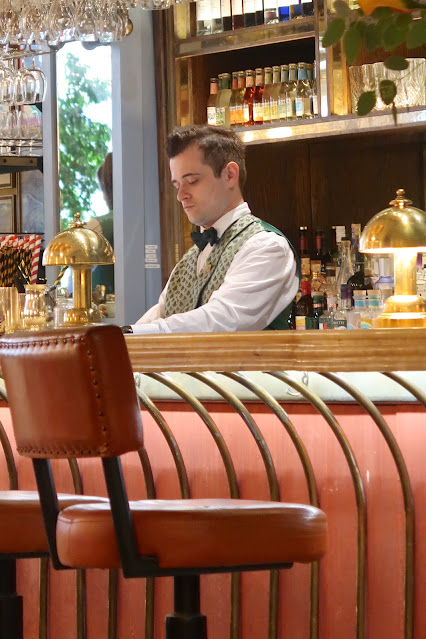






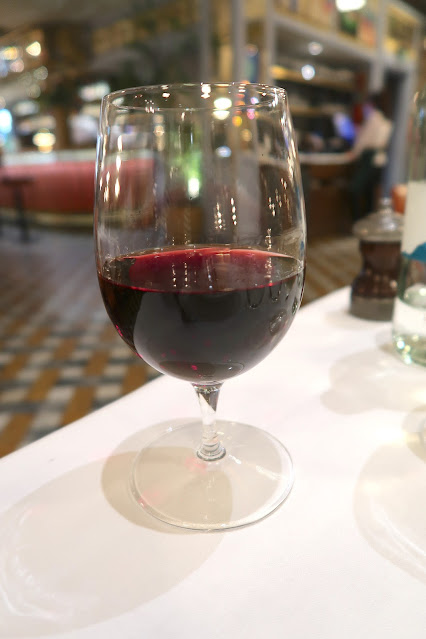
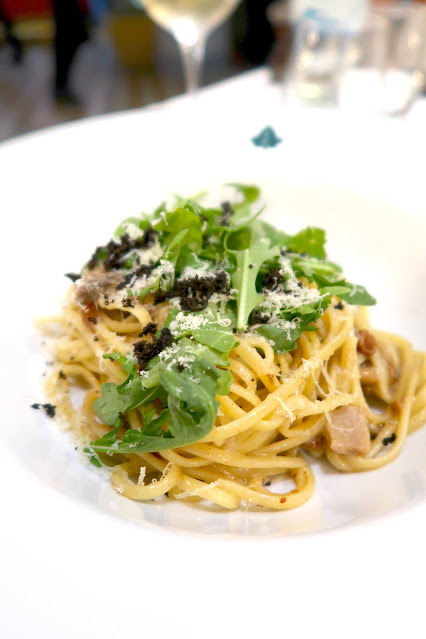
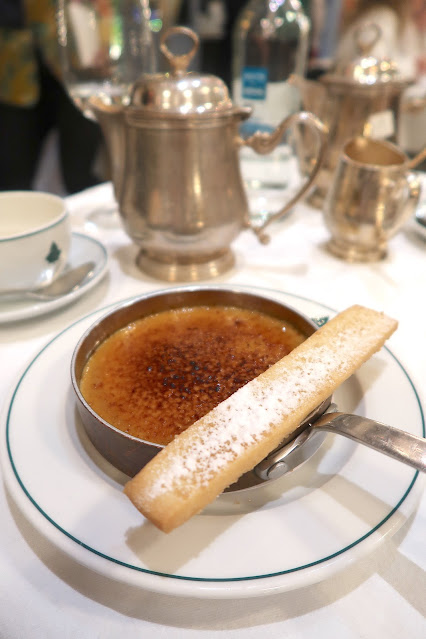
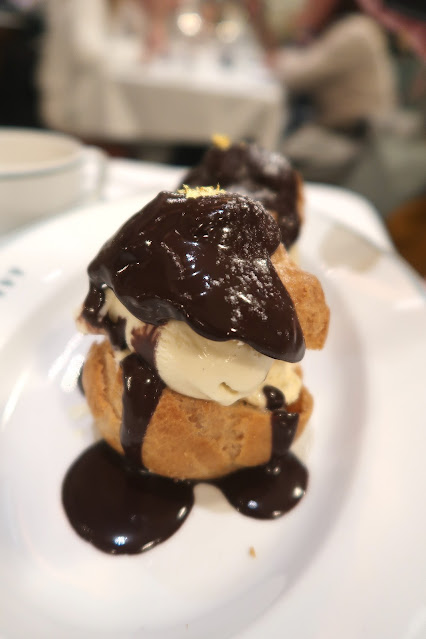


No comments:
Post a Comment